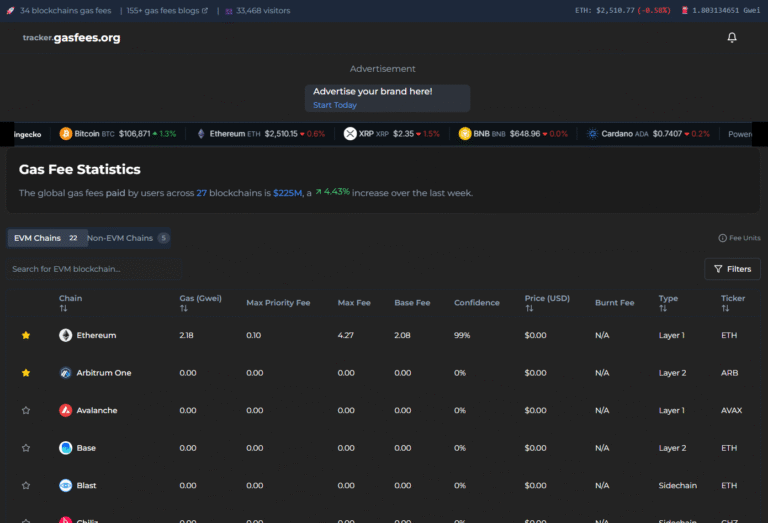Understanding Gas and Storage Fees on Aptos Blockchain
Written By: Mr. GasMan

Welcome, adventurers! Aptos beckons with its vibrant promise of DeFi opportunities and NFT treasures, but lurking in the shadows lies a fearsome beast: gas fees. These cryptic costs can devour your APT faster than a dApp dragon, leaving you frustrated and lost. Fear not! This guide is your trusty machete, hacking through the gas fee thicket and equipping you with the knowledge to conquer the blockchain landscape without breaking the bank.
Fueling Your Aptos Adventures:
Think of gas fees as tolls on the Aptos highway. Every transaction, from claiming NFT loot to launching your own dApp, requires spending the native token APT to compensate validators for processing your actions. But unlike a static toll booth, Ethereum’s system pulsates with dynamism.
Two Components for Your Journey:
-
- Execution & IO Costs: This covers your usage of transient computation resources, like processing your transactions and sharing data across the network. Imagine it as the fuel for your transaction’s engine. The price fluctuates based on network traffic, similar to rush hour tolls.
-
- Storage Fees: This pays for permanently storing your validated record in the distributed blockchain. Think of it as renting a secure vault for your digital treasures. The price is fixed in APT, offering stability amidst the dynamic gas market.
Understanding Gas Units:
Transactions range from simple to complex, demanding different amounts of fuel. To measure this consumption, Aptos uses gas units, a dimensionless number similar to miles driven. Execution and IO costs are calculated in gas units, while storage fees use a combination of gas units and APT for clarity.
Setting Your Budget:
Before embarking on your blockchain journey, you need to plan your finances. Every transaction specifies two crucial parameters:
-
- max_gas_amount: This sets the maximum number of gas units you’re willing to spend, like your fuel tank capacity.
-
- gas_price: This is your tip to the validators, influencing how quickly your transaction gets processed. Higher prices mean faster travel, but also a lighter wallet.
Prioritizing Your Transactions:
In a busy network, patience isn’t always a virtue. If you need your transaction processed swiftly, you can increase the gas price, essentially offering a higher tip to move up the queue. Remember, this only affects the processing order within a block, not across the entire network.
Governance Shaping the Landscape:
Aptos isn’t a lawless frontier. The Aptos community sets the overall framework for gas fees, establishing minimum and maximum gas unit prices. This ensures stability and prevents gas price manipulation.
Storage: Your Persistent Footprint:
Every action you take on the Aptos blockchain leaves a record, stored securely in the distributed ledger. This persistent storage comes at a cost, calculated based on the size of your data and the events emitted during your transaction. But fear not, frugal adventurers! You can claim a refund for unused storage space by deleting it, making storage management a key skill for cost-conscious explorers.
Estimating Your Expenses:
Planning your budget is crucial for a smooth journey. To estimate how much gas your transaction will require, you can use two helpful tools:
-
- SimulateTransaction API: This lets you run a test run of your transaction on the blockchain, providing an accurate estimate of gas consumption.
-
- Gas Profiler: This built-in feature in the Aptos CLI analyzes your transaction code and offers insights into potential gas usage hotspots.
Remember:
-
- Think of gas fees like utility bills – essential for running on the blockchain, but with smart management, you can keep them under control.
-
- Monitor gas prices to choose optimal timing for your transactions, avoiding peak hours when costs are high.
-
- Utilize gas estimation tools to avoid surprises and budget effectively.
-
- Consider storage management strategies like data deletion to maximize your APT savings.
Beyond the Basics:
This guide equips you with the essential knowledge for navigating the Aptos gas fee landscape. But for adventurous spirits, here are some advanced strategies to explore:
-
- Contract Optimization: Streamline your code to minimize resource consumption and reduce gas costs.
-
- Multi-Sig Wallets: Share transaction costs and signing responsibilities for enhanced security and fee management.
-
- Layer 2 Solutions: Utilize sidechains or rollups for significantly lower gas fees on specific transactions.
Stay Informed, Stay Ahead:
The Aptos ecosystem is constantly evolving, and so are its gas fee dynamics. Keep an eye on gas price trends, upcoming developments like dynamic gas fee models, and cross-chain gas fee optimization solutions. By staying informed, you can adapt your strategies and continue conquering the Aptos blockchain with confidence and cost-efficiency.
Share this blog:
Recent Gas Fees Post
Cryptotag Zeus
Why Use GasFees.org? 🛠️
📊 Real-Time Data: Get accurate gas fee updates anytime.
🌍 All Blockchains: Layer 1 and Layer 2 covered in one place.
💸 Save Money: Optimize transactions with our insights.
🔍 Easy to Use: Designed for beginners and experts alike.









